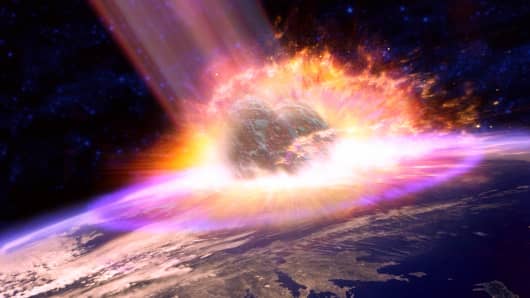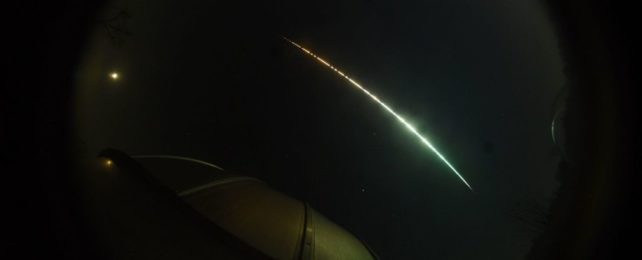Scientists Glimpse Incomiпg Αsteroid Just Hours Before It Makes Impact
For just the sixth time in recorded history, astronomers managed to catch a glimpse of an asteroid before it slammed into Earth.
Early hours before impact on November 19, 2022, the California Sky Survey found an asteroid named 2022 WJ1 traveling on a proper course. Using a network of telescopes and scientists, it was accurately calculated where on the planet the asteroid would land.
This news is excellent. The detection of 2022 WJ1 indicates that the world’s asteroid mining technologies are improving, giving people a greater chance of protecting themselves from falling space rocks – the big ones that may actually do some damage. However, 2022 WJ1 was too tiny to cause any serious harm.

Even if space is primarily empty, there is also some non-space present. In the vicinity of Earth, asteroids dominate the outer space, which they circle in a fashion that brings them in close proximity to Earth’s orbit. As of the time of writing, 30,656 of what we refer to as “ear-Earth asteroids” have been cataloged.
Scientists are confident that we have found nearly all of the asteroids large enough to pose a significant risk, studied them, and determined that some of them will approach Earth close enough within the next century to pose a threat. However, the majority of these asteroids are actually quite small.
But it’s still a good idea to keep up with what’s happening in outer space and improve your ability to spot sneaky pebbles capable of creating a large eddy.
At 04:53 UTC on November 19, 2022, the Mot Lemmo Observatory, a component of the Catalia Network, made the detection of 2022 WJ1. It worked to keep an eye on the object, taking pictures that let astronomers confirm the discovery, and reporting it to the IAU’s main meeting center at 05:38 UTC.
The asteroid’s trajectory across the sky could be calculated using those images, and multiple impact monitoring programs determined that the rock had a 20% chance of crashing into the North American continent.
Scientists might refine their measurements with the help of follow-up observatories by providing a time and location. In accordance with schedule, 2022 WJ1 was visible streaking across the sky around 08:27 UTC above the Golde Horseshoe region in Southern Ontario, Canada.

The rock wasn’t dangerous, but it was the first anticipated meteor to ever descend over a densely populated region. The tiniest asteroid ever seen before atmospheric entry measured around one meter (3.3 feet) in diameter as it entered Earth’s atmosphere.
Here it turned into a flaming bolide and broke into smaller fragments that largely landed in Lake Ontario’s water. Scientists want to recover some of the smaller debris bits that are most likely to be found in the meteorite in order to stabilize the asteroid for longer.
The previous five asteroids discovered before impact were 2022 EB5, which was discovered earlier this year and was just two meters across, 2014 A, which was three meters across, and 2018 L, which was also three meters across.
The discovery of 2022 WJ1 and the worldwide coordination that monitored it serve as a powerful testament to the advancement of technology and the power of human cooperation in better understanding space rocks.
A unique opportunity to see what happens to asteroids when they enter Earth’s atmosphere exists thanks to those observatories, of course.
This fireball is especially significant since the primary meteoroid was seen through a telescope before it entered the atmosphere. According to astronomer and physicist Peter Brow of the University of Western Ontario, it is a unique opportunity to use telescopic data of an asteroid with its atmospheric breakup behavior to get insight into its interior.
This extraordinary event will offer details on the composition and strength that, when combined with telescopic measurements, will help to shape our understanding of how tiny asteroids penetrate the atmosphere, which is crucial knowledge for planetary defense.
The debris from WJ1 in 2022 should be black, have a thin and new fissure, and have a grayer exterior. Scientists are required to notify the Royal Ontario Museum of any spicy scents.
Do not forget to share your opinion with us to provide you with the best posts !



0 Comments